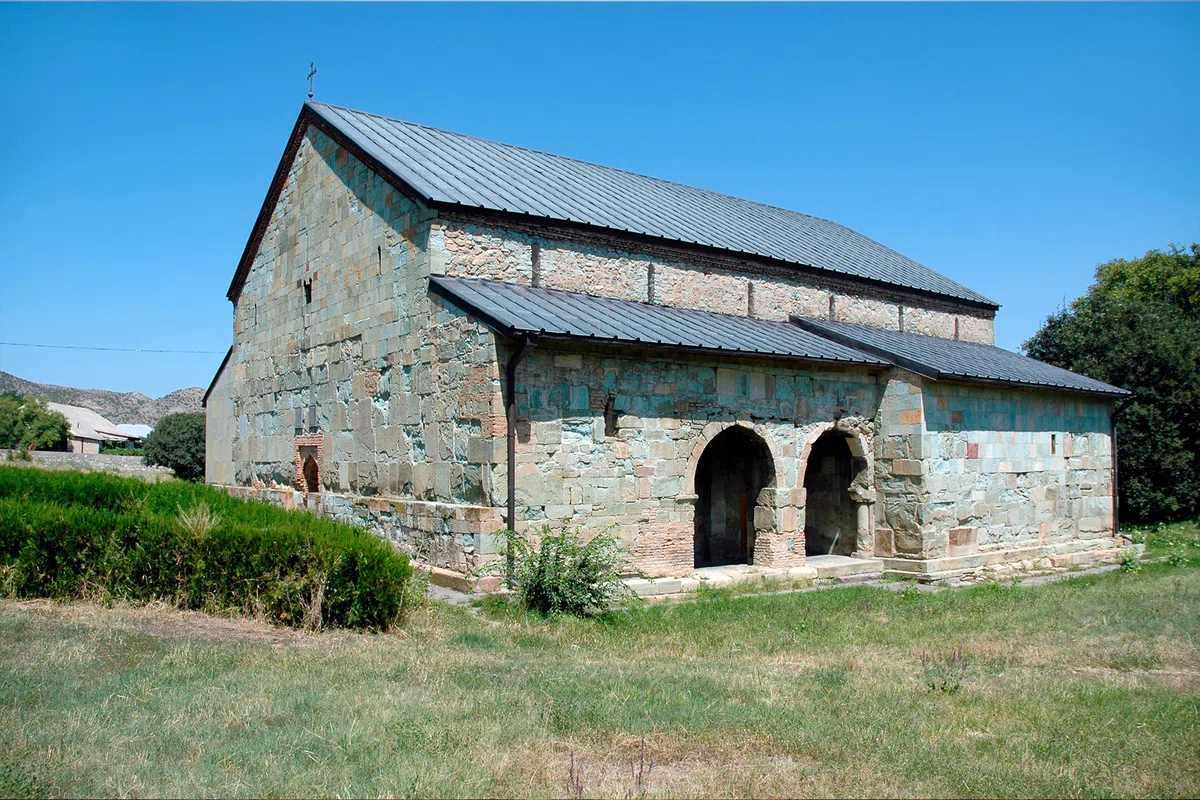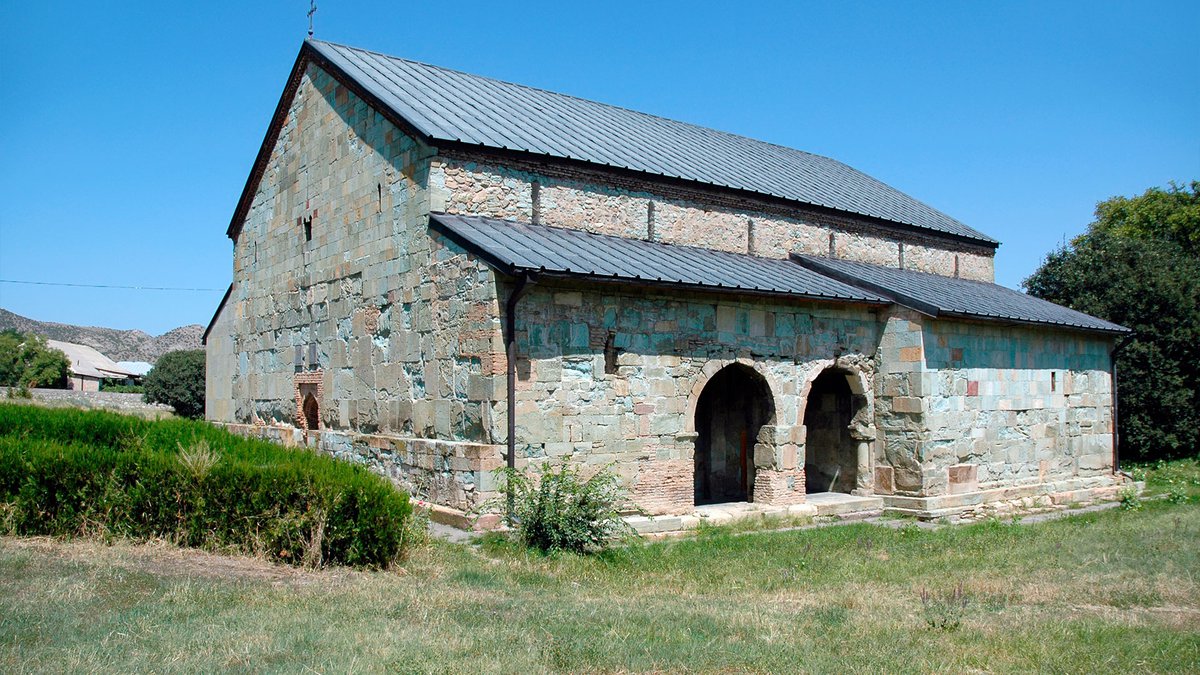
The history of Bolnisi Zion - sights of Georgia in Kvemo Kartli.
Bolnisi Zion was built in the fifth century, is located 70 km from the Georgian capital Tbilisi and is one of the most ancient sights of Georgia. The monastery building has been damaged several times throughout its history. At the moment, the temple has been restored.
Bolnisi Zion is the oldest Georgian temple made in the form of a three-nave basilica, the first authentic basilica of the early Christian period of Georgia. It is located in the eastern part of the state, in the area of Kvemo Kartli, the municipality of Bolnisi, in the village of Bolnisi of the same name, 70 km from the capital Tbilisi. The temple itself is notable for its own historical meanings, as well as the power of artistic impact. The impressive color - the richly striking splendor of turquoise-green smoothly hewn slabs of the walls and its location, mountains, hills - can truly be called the most beautiful places in Georgia.
The composition and details of the temple are distinguished by colorful features that allow it to be considered an extraordinary case of early Georgian architecture.
The facades of the Bolnisi temple became the source of some of the earliest and most ancient writings in the Georgian language and to this day have preserved such long-standing examples of ancient Georgian engraving that tell the rich history of such a beautiful and multifaceted country as Georgia. In the Bolnisi Zion, for the first time in Georgian architecture, one can find expressive, sculptural images - the head of a bull, various birds (peacocks, birds with a wreath in their beak) and other animals such as deer (chamois), pursued by a bear or with two lions on either side, as well as trees and plants. These historical values are references to the pre-Christian era, subsequently mastered by the Christian faith.
In the temple, it is quite often possible to meet various images of the main Christian symbol - the cross. One of them is known as the "Bolnisi Cross". This cross is an isosceles cross drawn by sectors of a circle, with expanding sleeves. Crosses of a similar shape are usually enclosed in a round frame. It is believed that such a cross dates back to the reign of the Roman ruler Constantine the Great, who in 313 by the Edict of Milan allowed the free practice of Christianity.
History
Bolnisi Zion is one of the largest basilicas in Georgia. It was built as the cathedral of the newly formed Bolnisi and Dmanisi diocese of the Georgian Orthodox Church in 478-493 . It belongs to the V century. A clear date for the construction of the temple was determined thanks to the inscription on its facade, which reads: “With the help of the Holy Trinity, the construction of this church was started in the 20th year of Tsar Peroz and completed in 15 years. Whoever bowed here, may God have mercy on him, and whoever prays for the bishop of this church, David, may God also have mercy on him. Amen.”. At the moment, the plate with the inscription provided is being preserved in the Art Museum of Georgia, and an exact copy has been inserted in its place. Wondering - “What to see in Georgia?” You can respond by visiting a temple and a museum. In the VIII century, a small chapel in the name of St. Gregory was attached to the temple from the east.
In 1634, as a result of the invasion of the Persians, the vaults and partly the western wall were severely damaged. The restoration of the destroyed parts was initiated and carried out in the first half of the XVII century, by order of Queen Mary and Tsar Rostom. The renovation was made mainly of brick. In the last decade of the same century, Bishop Nicolai of Bolnis, who arrived “to manage the breadwinner of the Mother of God of Zion (Mother)” the interior painting of the temple was carried out, as well as a bell tower was erected, an altar barrier, a lectern and a ciborium were built, rich contributions of church utensils were made. All the works and contributions were of a memorial nature - “for the remission of many sins, for the forgiveness of the souls of my father and my mother, pray.”
Information about the latest restoration and strengthening works of the temple dates from 1936-1936 and 1970-1971. It is considered one of the many objects that can be attributed to the lists of sights of Georgia and which are really worth a visit.













26 comments
Log in to leave a comment